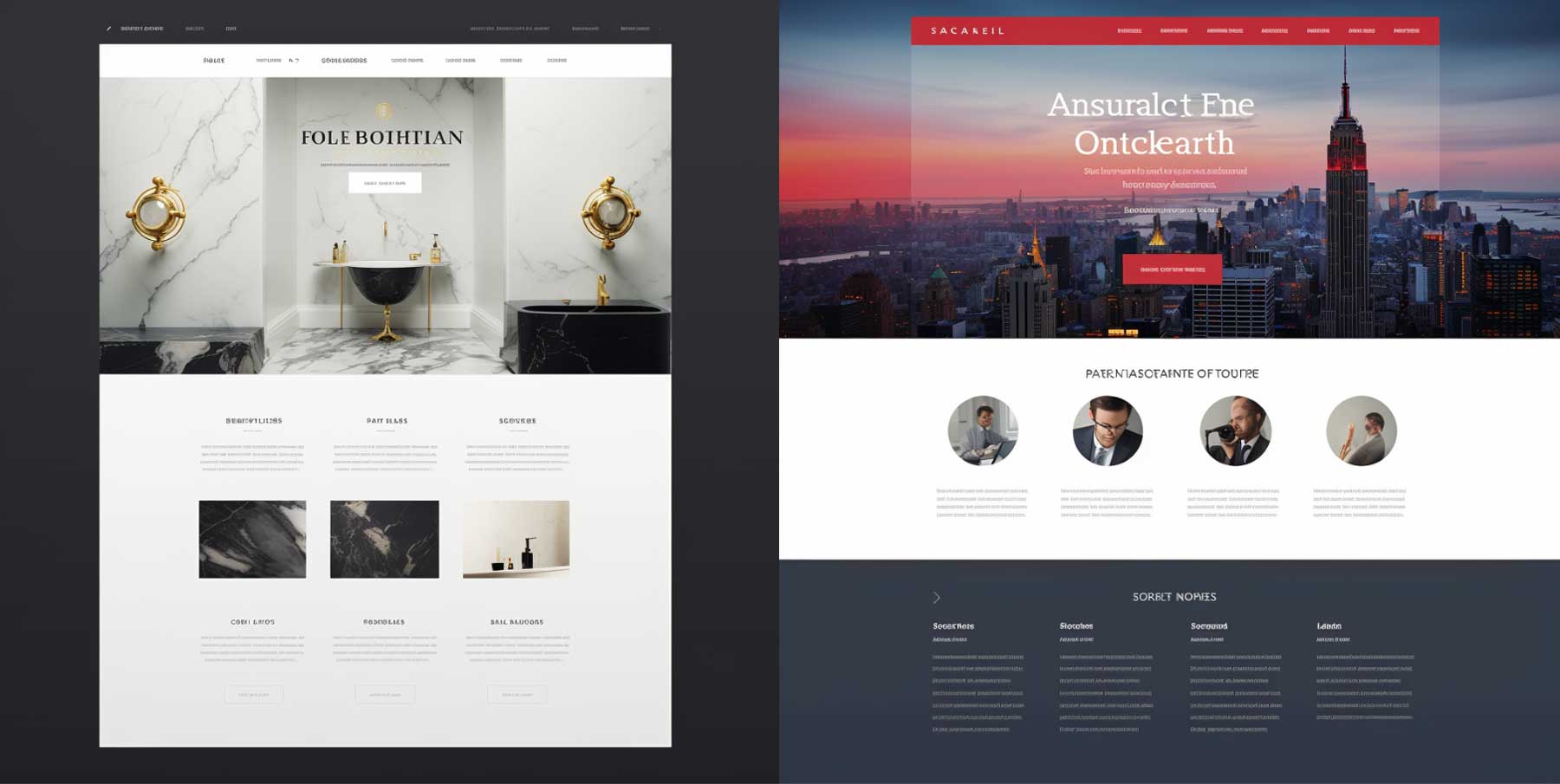Boost Your Online Visibility with Webwize Tomball Web Design
Boost Your Online Visibility with Webwize Tomball Web Design
Blog Article
Master the Art of Web Layout With These Professional Tips and Techniques
In today's electronic age, having a visually appealing and properly designed web site is important for any business or private wanting to make a mark online. Mastering the art of web layout needs more than just an eye for aesthetics. It includes a deep understanding of user experience, performance, and the most up to date techniques and patterns. Just how can you elevate your internet style abilities to the following degree? In this conversation, we will check out expert pointers and tricks that will certainly not only improve the aesthetic charm of your website yet also enhance its use and efficiency. From choosing the ideal shade palette to integrating reliable call-to-actions, these insights will assist you develop a web site that not just captivates your audience yet also drives results.
Selecting the Right Color Palette
When choosing a color combination for internet style, it is vital to think about elements such as brand name identity, target audience, and total aesthetic objectives. The colors made use of in a site can significantly affect exactly how customers view and interact with the website.
In addition to brand name identification, the target audience should also be taken into consideration when selecting a shade scheme. Recognizing the choices and assumptions of the target audience can help create a visually appealing and engaging internet site.
Last but not least, the overall aesthetic goals of the website should be considered when selecting a shade scheme. The color design need to enhance the total layout and format of the website, creating a visually appealing and cohesive experience for customers. Whether the goal is to create a peaceful and soothing setting or an energised and dynamic environment, the color palette should be carefully picked to accomplish the desired aesthetic.

Developing User-Friendly Navigation
To enhance the user experience, it is important to establish easy-to-navigate and instinctive food selections for internet sites. Straightforward navigating is critical for leading site visitors via the numerous areas and web pages of an internet site, permitting them to quickly find the content they are searching for. When developing the navigation menu, simplicity is key. Prevent littering the food selection with also several options, as this can overwhelm users and make it hard for them to make decisions. Rather, concentrate on supplying concise and clear tags for each and every food selection item, using acquainted terminology that users can conveniently comprehend.

In addition to clear labels and logical organization, it is very important to make the navigation food selection conveniently obtainable. Put it in a famous place, such as at the top of the page or in a fixed position, so that customers can conveniently discover and access it from anywhere on the web site. Take into consideration utilizing a responsive design approach to make certain that the navigating menu remains obtainable and useful on different devices, consisting of smart phones and tablets.
Incorporating Receptive Style Methods
In order to optimize internet site performance across numerous gadgets, incorporating receptive style techniques is crucial. Receptive style is a website design method that allows internet sites to respond and adapt to various display dimensions and orientations. With the enhancing use of tablet click this link computers and smart devices, it is important for web developers to produce sites that offer an optimum watching experience for users on all tools.
One of the key strategies in responsive layout is using liquid grids. Instead of creating fixed-width designs, web developers create versatile grids that change and resize based on the display size. This ensures that the web content on the web site continues to be readable and obtainable, despite the gadget being made use of.
Another crucial strategy is the usage of flexible pictures and media. By establishing the optimum size of video clips and photos to 100%, they will automatically scale down to fit smaller displays. This prevents images from being removed or misshaped on mobile tools.
Furthermore, receptive layout entails utilizing media questions to apply various styles and layouts based upon the gadget's screen dimension. This allows web designers to produce a seamless experience by personalizing the discussion of material according to the gadget being made use of.
Optimizing Internet Site Rate and Efficiency
One important element of website design is maximizing internet site rate and efficiency. In today's busy electronic world, individuals have little persistence for slow-loading web sites. A slow-moving internet site can lead to a poor user experience, high bounce rates, and lower internet search engine positions. To make certain that your website performs at its best, there are a number of approaches you can apply.
To start with, maximizing photos is crucial for enhancing site rate. Images ought to be correctly pressed and resized to lower their data size without compromising high quality. This can be done using look at this now picture optimization tools or plugins.
An additional crucial element to take into consideration is web site caching. Caching involves saving static variations of web pages to make sure that they can be swiftly obtained as opposed to creating them from the ground up each time a customer checks out the site (Webwize Tomball Web Design). This considerably reduces packing times and improves general efficiency
Minifying CSS and JavaScript documents is another efficient strategy. Removing unneeded whitespace, remarks, and reducing code intricacy can greatly enhance internet site speed.
Executing Reliable Call-to-Actions
Creating influential and compelling call-to-actions is an important facet of effective web style. A call-to-action (CTA) is a timely or guideline that encourages individuals to take a specific action on an internet site, such as making a purchase, signing up for a newsletter, or contacting the business. Applying efficient CTAs can significantly boost customer engagement and conversion rates.
To develop engaging CTAs, it is very important to use succinct and clear language that conveys the value recommendation and advantages of taking the wanted activity. The CTA needs to be aesthetically noticeable on the page, using contrasting design and colors components that attract the customer's focus. Additionally, using action verbs and producing a feeling of necessity can better enhance the effectiveness of the CTA.
Furthermore, it is very important to place the CTA strategically on the page. Placing it above the fold, where it is promptly noticeable to customers without requiring to scroll, can considerably boost its presence and click-through rates. It is additionally helpful to check different variations of CTAs to determine which ones reverberate finest with users and drive the highest conversion prices.
Final Thought
Finally, mastering the art of website design needs attention to various elements such as color palette option, straightforward navigation, responsive layout methods, site rate optimization, and reliable call-to-actions. By implementing these professional pointers and tricks, web developers can develop practical and visually attractive websites that improve individual experience and drive desired activities.
The colors used in an internet site can considerably influence just how users regard and communicate with the site.In order to maximize site capability across different tools, integrating receptive design methods advice is essential. Responsive style is an internet design technique that permits sites to adjust and react to different display dimensions and orientations. With the boosting usage of smartphones and tablets, it is essential for internet developers to produce websites that offer an ideal watching experience for customers on all devices.

Report this page